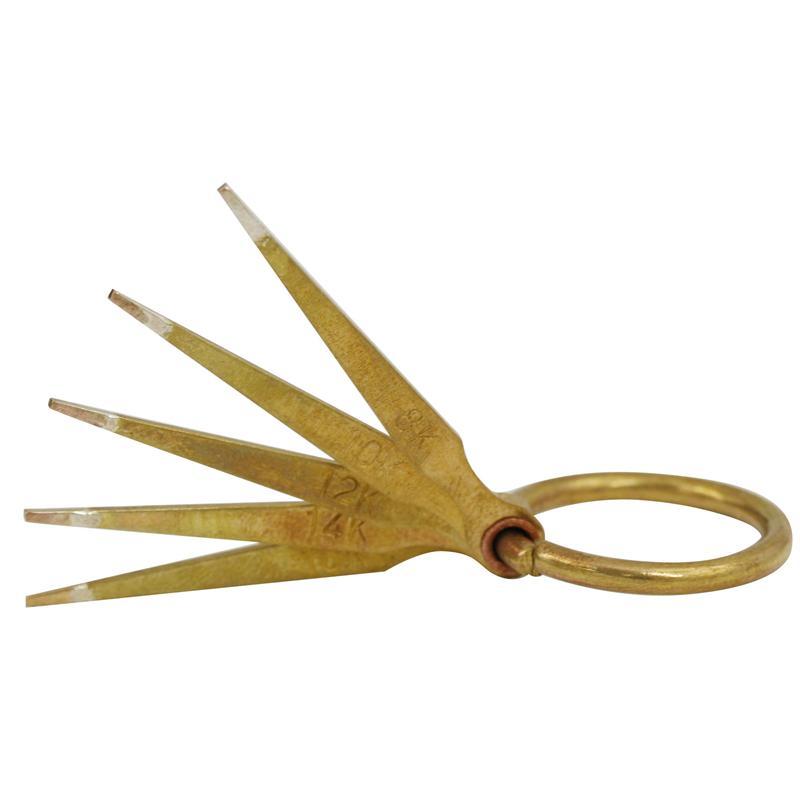This method of testing involves you opening up the unknown gold piece, taking metal shavings from the inside and applying acid directly to them when you suspect that the metal is 10 karat gold or less. Remember, you can only really rely on this test after you have tried the basic steak method above and the streak faded almost completely with the application of acid.
This being said, it is important that you try to limit destructive testing as much as possible to items that either have little aesthetic value, or it can be easily repaired. And you should always be sure to ask for your customer’s permission before performing a destructive test on one of their items.
Tools Needed:
- A jewelry cutter
- A jeweler’s pliers
- A jeweler’s file
- A testing stone
- An optional jeweler’s loupe or other magnification device
- And 14 karat gold testing acid
Step 1
Take your jewelry cutters to cut through the metal so you have an opening in the piece of gold. This may take several tries to create an opening if the metal is particularly thick or heavy.
Step 2
Once you have a cut all the way through the metal, take your jewelry pliers and pull the metal apart so that you have a gap that is wide enough for you to insert your metal jeweler’s file inside the cut. Set the pliers aside and holding the metal over your testing stone shave away a small amount of metal.
Collect the metal shavings from the inside of the gold piece in a pile on your testing plate so you can accurately test them. Be sure to avoid getting shavings from the outer surface of the metal as much as possible.
Step 3
Drop a drop or two of the 14 karat acid on the metal shavings on your testing plate and observe the reactions. You are watching to see if some sort of green bubbles appear where you applied the acid to the metal shavings. Sometimes you may need a jeweler’s loupe to observe the acid reaction and see if there are actually green bubbles, you can also blot the acid with a white tissue or napkin to better observe the color of the reaction bubbles which will give you better viewing contrast than a gold background.
-
- If the shavings immediately begins to bubble profusely with very green bubbles the item is either gold filled or gold plated with copper, nickel or a brass alloy composing most of the metal content of the piece. This is also a common reaction for gold that is 7 karat gold or less.
-
- If after 10 seconds, there are only a few green bubbles among the shavings, the item is most likely 9 karat gold. Be aware that 10 karat white gold will bubble green very slightly when the 14 karat acid is applied due to the high nickel alloy, so if the metal is white you will have to be cautious in your identification of the metal.
-
- If after 10 seconds, there are a number of green bubbles in and among the shavings, the item is going to be around 8 karat gold.
-
- If the metal shavings turn brown immediately and after 10 to 15 seconds of observation there are no green bubbles the item is a true 10 karat gold.






Leave A Comment